Thurston Moore talks Sonic Youth and solo albums
In-depth in a rare guitar interview
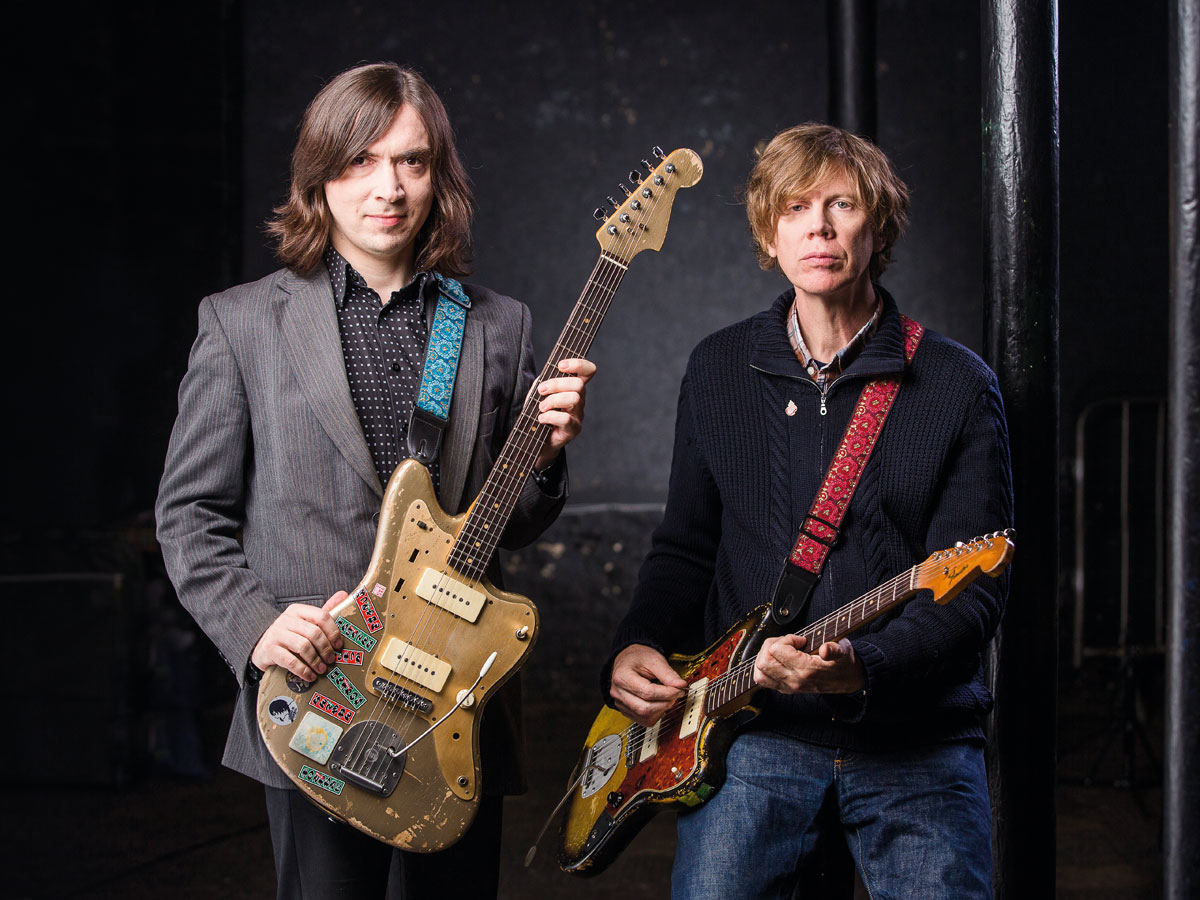
Introduction
In a rare guitar magazine interview, Sonic Youth frontman Thurston Moore lifts the lid on his killer new solo album, the roots of his thirst for leftfield experimentation and, perhaps unexpectedly, his ongoing fascination with black metal...
"I realise that I’ve been sort of a poster boy for guitar geekdom to some degree..."
Thurston Moore laughs as he sips a pint of Guinness across from us in his local Stoke Newington boozer. “I’ve never really been a guitar geek! I realise that I’ve been sort of a poster boy for guitar geekdom to some degree... but I’ve never been a guitar geek myself,” he claims.
“Guitar geek” or not, Thurston - who has been residing in London for the past year - is arguably one of the most influential guitarists of the last 30 years, along with (naturally) his Sonic Youth six-string cohort, Lee Ranaldo.
Their extreme altered tunings, masterful feedback manipulation and unique experimental guitar figures - all matched with teasing melodic noise-pop sensibilities - have proved hugely influential on a thousand and one bands the world over.
Outside Sonic Youth (who have been on “indefinite hiatus” since 2011), Moore has also managed to knock out four stunning solo records since the mid-1990s while also collaborating and improvising with some of the music world’s most creative and uncompromising personalities.
For his latest album, The Best Day, Thurston has a new band in tow, consisting of My Bloody Valentine bassist Debbie Googe, Sonic Youth drummer Steve Shelley and Nought guitarist James Sedwards. Indeed, Sedwards happily joins us in the pub for part of the interview to help chew over the new record...
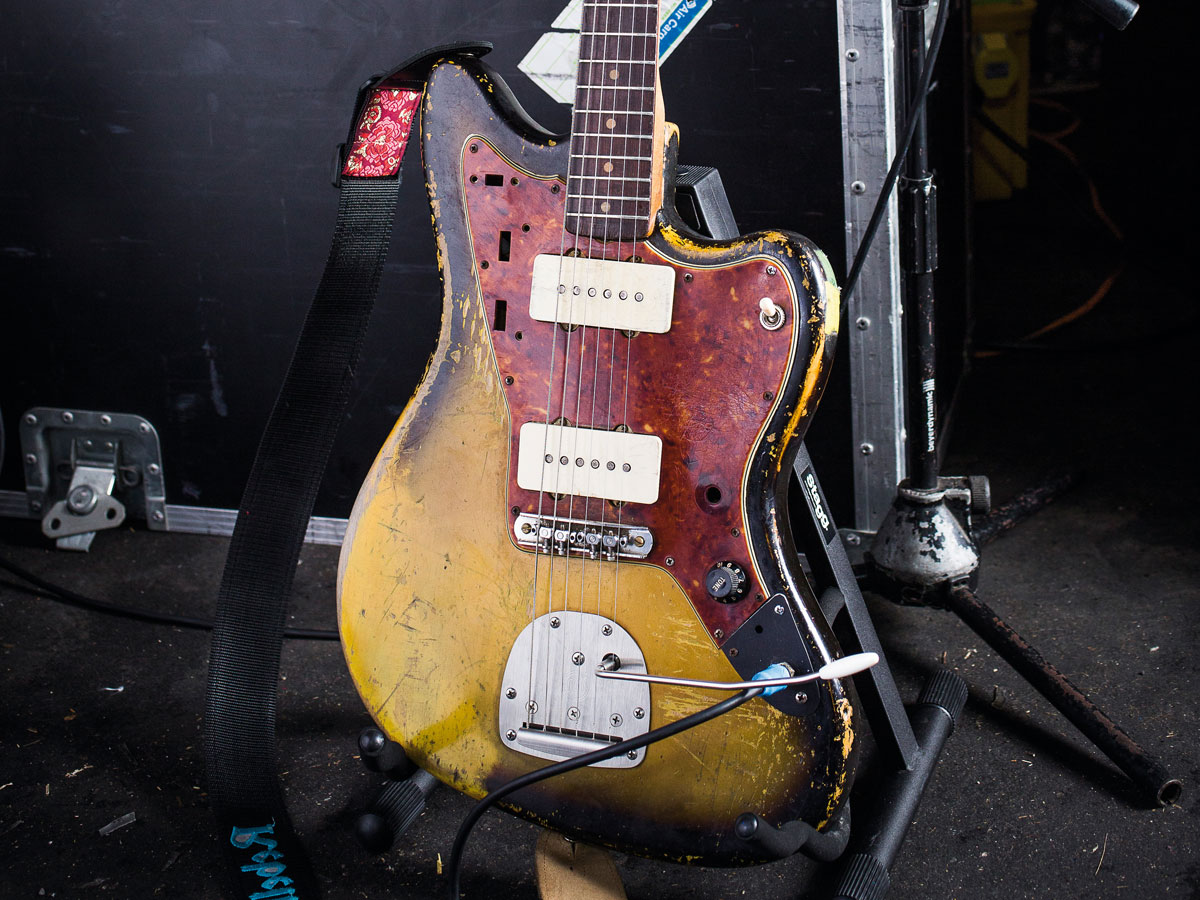
'Ssential six strings
From a guitar perspective, how did you approach the arrangements on The Best Day?
Thurston Moore: “It’s something that came together quickly songwriting-wise. It wasn’t very belaboured at all. By the time I showed James the songs I was working on, they were purposefully simplistic to some degree, and minimal. At that point in time, I was kind of interested in just doing these really linear songs that had a lot of focus on the drone of the guitars.
"It was all about the idea of repetition with two Fender guitars playing together"
"When we were first playing them, they were instrumental and it was all about the idea of repetition with two Fender guitars playing together. Then they became more song-oriented and truncated to some degree and lyrics came in, and then Steve and Deb came in and they became real songs.”
What tunings did you both utilise?
TM: “Mostly a tuning that I’ve used on some of my solo records. I don’t know how much I’ve used it on Sonic Youth material, but it’s CGDGCD, which I think I used a lot on Trees Outside The Academy [2007].
"It’s not far removed from a tuning I used in the mid-90s on Psychic Hearts, which was CGDGBB, which we revert to live because we play songs from that album at the end of our set. There’s also a tuning, DDAF#AD, that I use for the title song that’s quite different, but James stays in that other tuning.”
James Sedwards: “Yeah, I’m just in CGDGCD throughout. It just worked out really well because I guess the whole purpose of a lot of this was to have the guitars in unison and to get those overtones of unison guitar strumming. There was no need to really diversify the guitar parts too much.”
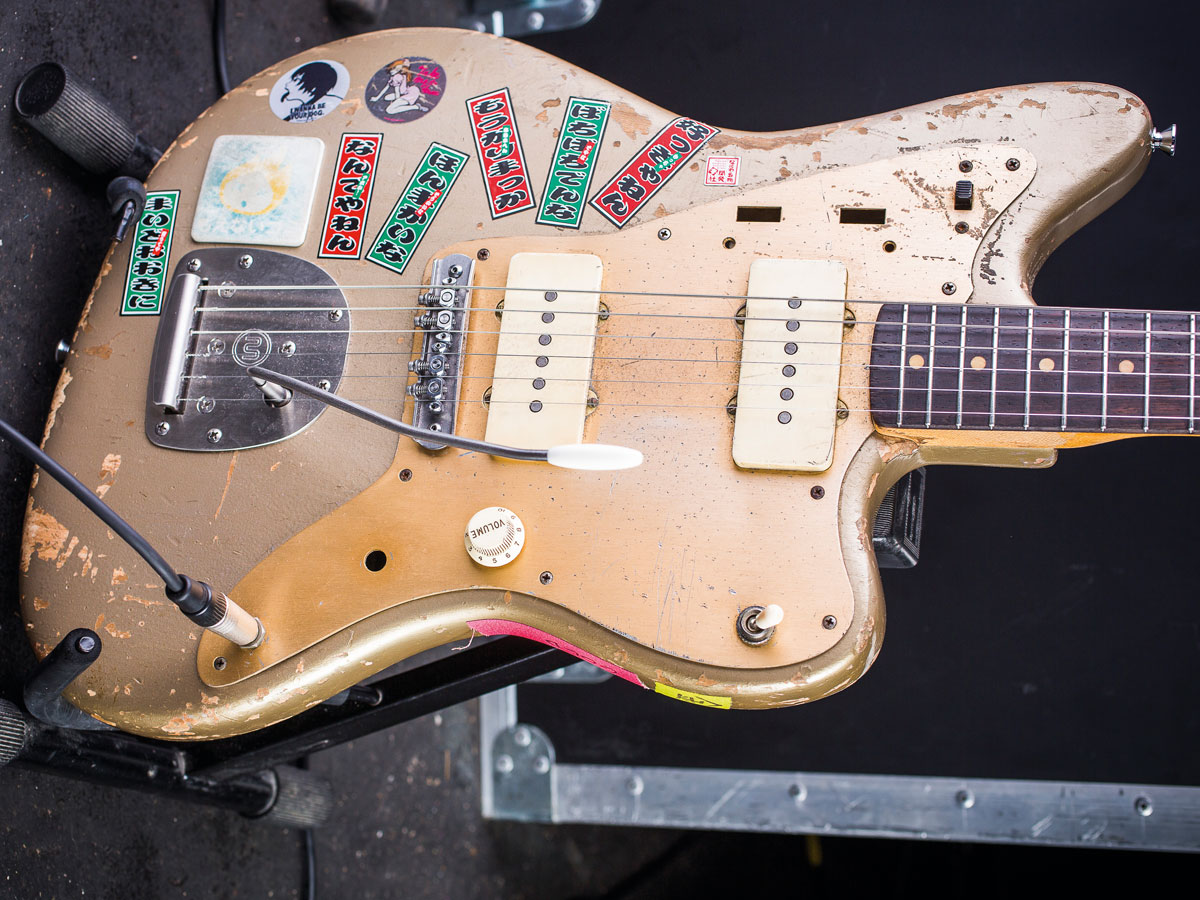
Weapons of choice
What guitars did you play in the studio, and which of those are you taking out on the road?
"My Jazzmasters have Mastery bridges... You can use those and not see your tuning go all over the place"
TM: “Actually, I primarily played the Sunburst Jazzmaster that I’m playing now on this tour across the whole record. Then I also used a 12-string Martin acoustic on a few songs.”
JS: “I used a really old Jaguar, which I really like the sound of and I know it really well. It’s a 1962 model and there are no modifications, apart from it’s got a Mastery bridge on it. It worked really well on the recording, but I’m not using the Jaguar in the live band right now. I’m using a Jazzmaster, which Thurston’s kindly leant me.”
TM: “That’s a first series ’58 Jazzmaster. Both Jazzmasters have Mastery bridges and the Mastery vibrato units. It’s surprising how much you can use those [units] and not see your tuning go all over the place.”
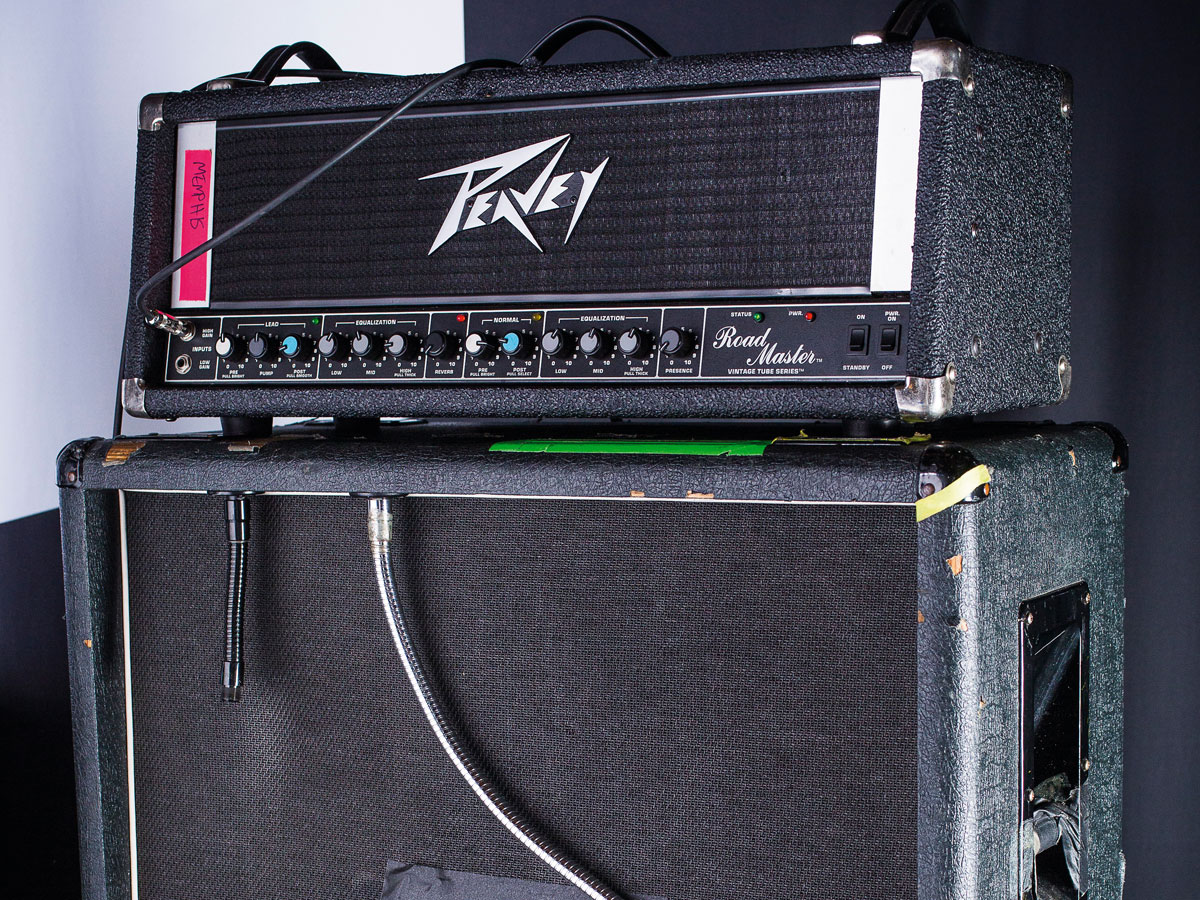
Amp'd up
What have you been plugging into amp-wise?
"I usually use a Peavey Road Master... I used that a lot through the last 10-plus years of Sonic Youth"
JS: “I’ve got a very old Marshall JCM800 split-channel combo, which I used in the studio. It’s very versatile, records well and you can get a lot of different sounds out of it.”
TM: “I have a DeVille that Fender graciously gifted me when I moved here. I was just like ‘I need to record’, and I got that and used that in the studio. They’re kind of a workhorse amp. Maybe they’re not the most tonally interesting amp, but I think they’re really good for small gigs and they’re okay for recording. But what I usually use is a Peavey Road Master tube head powering a 4x12 speaker cabinet. I used that set-up a lot through the last 10-plus years of Sonic Youth.”
JS: And that’s what we’ve been using live on the last run of dates. They’re very loud and very clean, but it’s kind of a powerful clean.”
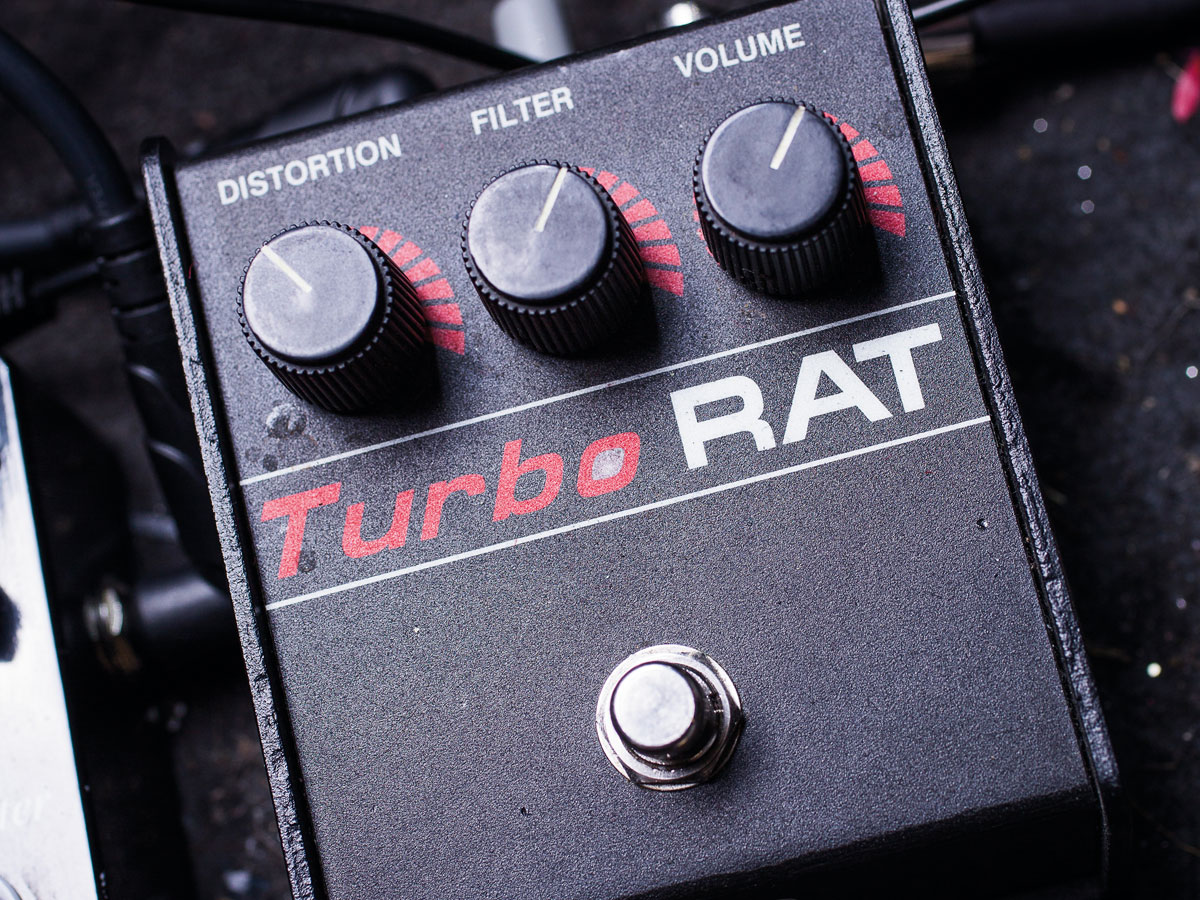
Chairmen of the 'board
How about effects on the album?
TM: “Well, James has a whole array that he can tell you about!”
"I’ve been using Turbo RATs for quite a number of years"
JS: “There weren’t many on the record, actually. I think I had a Pete Cornish G-2 overdrive pedal, which was useful for lead work, and there was probably an analogue delay there somewhere. I used a Lovetone Flanger at one point. That doesn’t give you a classic flanging sound, but more strange or unusual modulations.
"Mainly, the sound was just guitar into amp. There were probably one or two drive pedals in there somewhere, but we both use Pro Co Turbo RATs live and in the studio. They seem to come in very handy.”
TM: “I’ve been using Turbo RATs for quite a number of years. I don’t know if it’s my favourite distortion sound, but I know it well enough and they’re really tough on the road...”
JS: “Yeah. Really, really tough on the road. They’re also very versatile. Some of my pedals prefer one amp to another, whereas those just seem to work well with whatever the backline is on the day.”
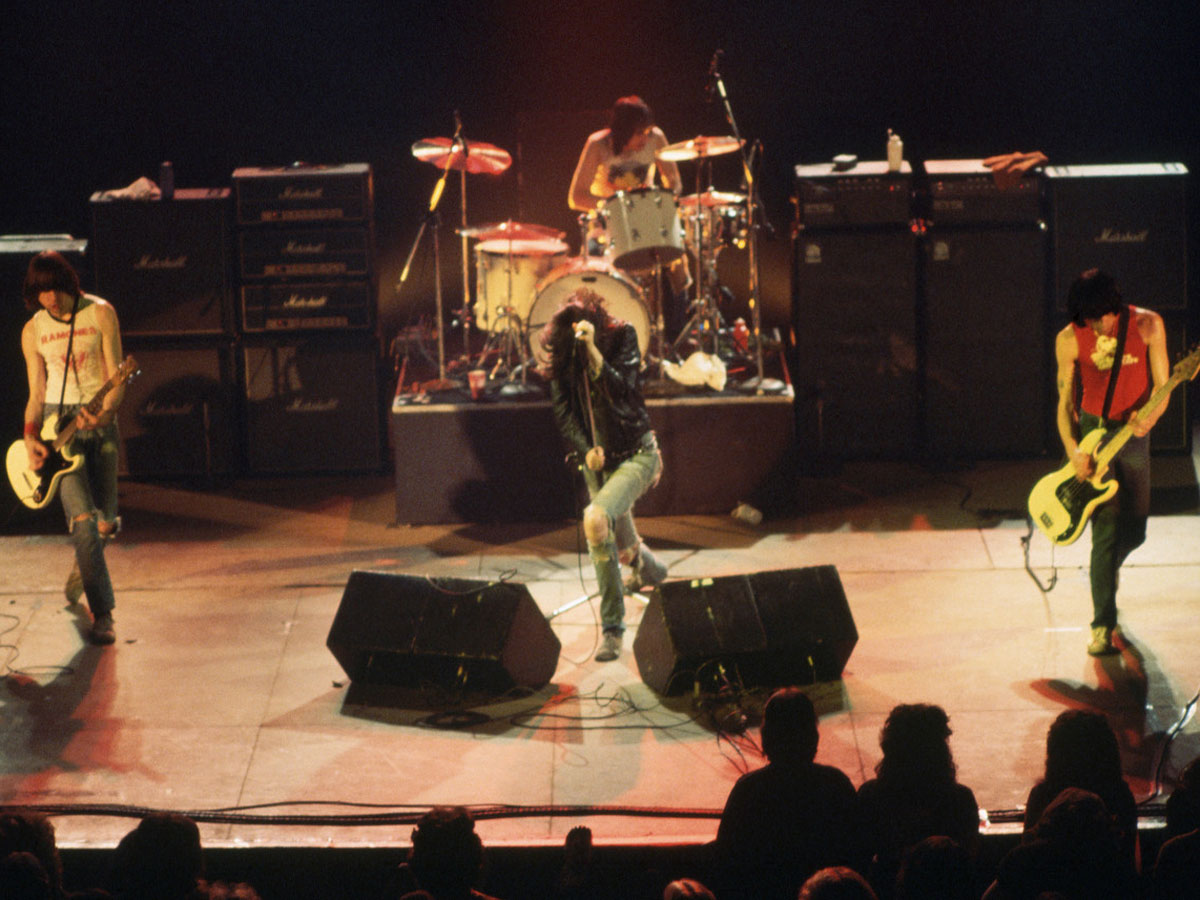
Early inspiration
Thurston, who or what first inspired you to pick up a guitar?
TM: “I had an older brother who brought one into our household so, all of a sudden, there it was. I didn’t really have any aspiration to become a guitar player but I thought that it was maybe the coolest instrument to play.
"I would invariably break it out of its case when he was away, wire it up to the stereo system and play it, but there weren’t any role models for me that I thought I’d be able to play like.
"Those were my inspirations because I was like, ‘Well, I don’t have to play traditional guitar!’'
"I didn’t really take it so seriously until ’76, when I heard the Ramones and the Sex Pistols, and then I was like, ‘Oh, yeah, I can do that... and I like doing that’. I started actually coming up with songs on guitar, and I remember thinking, ‘Oh, I can give this to the Ramones!’ The first thing I wrote was a song called, I Don’t Wanna Mow The Lawn No More!”
Glenn Branca was an important influence, wasn’t he?
TM: “Well, I had these ideas of what a guitar maybe could do, but I never really thought about altered tunings or anything like that. Then I saw Glenn Branca play at some loft gig in New York around ’77 and he was actually accomplishing what I was hearing a little bit in my head.
"He had six guitars, a drummer and a bass player and it was just really ferocious, and they were going through these long movements. I was like ‘How’s he f **king getting that sound?’ Then I realised that he was tuning guitars to single notes. One guitar was all high Es, another guitar was low Es, another guitar was in Ds, and so on. I was like, ‘Oh, that’s interesting!’ and I tried doing it, tuning just to one note.
"I think from there I just started fooling around with tuning the pegs and just coming up with different ideas of tunings. It was fairly naïve, but seeing him was certainly a catalyst.”
Which other guitarists were important to you back in the late 70s?
TM: “I loved bands like Teenage Jesus [And The Jerks] and The Contortions, where the guitar players were women who were just playing slide and they weren’t exactly playing traditional guitar.
"Those were my inspirations because I was like, ‘Well, I don’t have to play traditional guitar!’ I just wanted to write songs and I wanted to be in a band and I wanted to have a guitar make noise and I wanted to be subservient to the song... so I just kind of taught myself my own way, but I wasn’t snobbish. I wasn’t like ‘Oh, Eric Clapton and Jimmy Page are worthless’, or anything, like the way punk was.
"I always really appreciated high-technique guitar playing, but I realised that that wasn’t what I was going to do. I just wanted to be radical and experimental with it, and I never really thought of myself as being a guitar player, per se. I was just using the guitar as a means to an end, and so I was very attracted to other guitar players who were like that.”
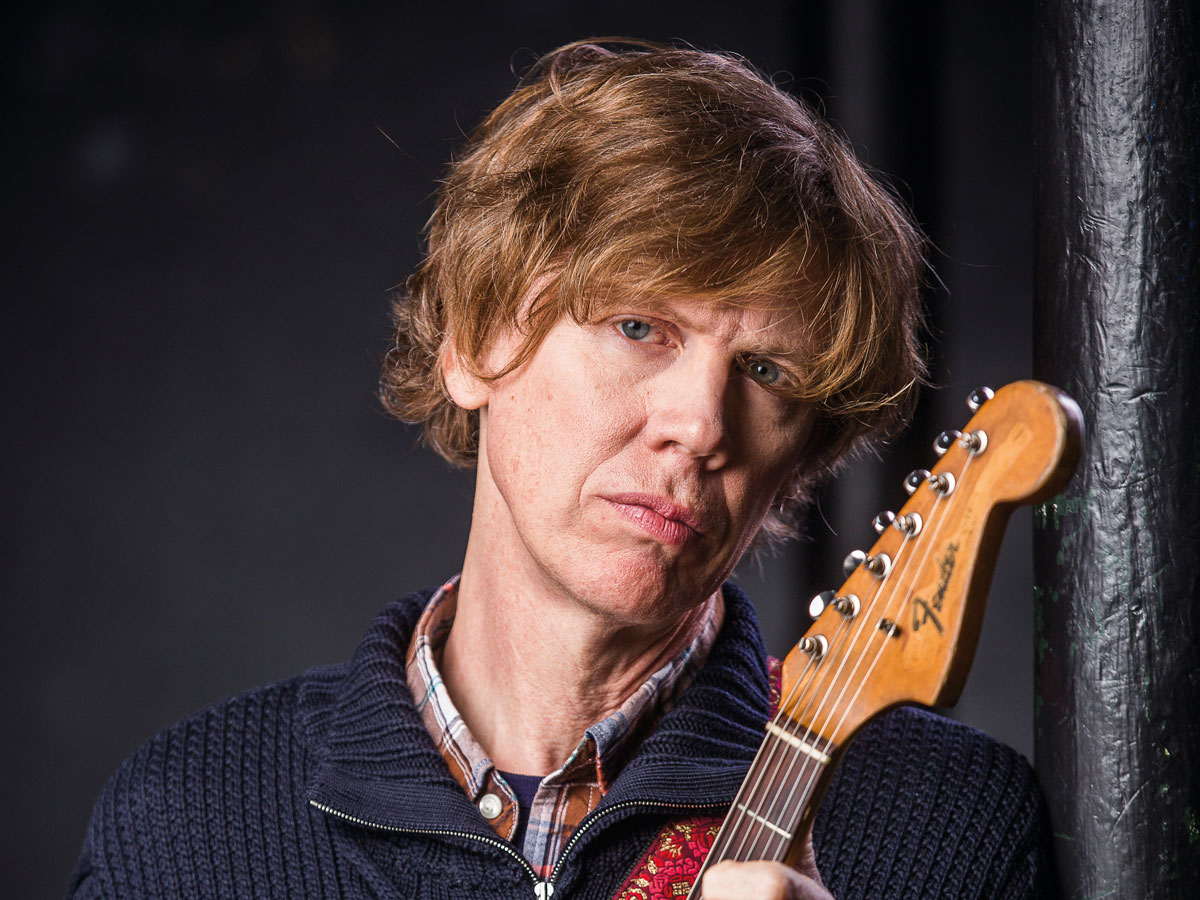
Sonic experiments
How were you experimenting at the very start of Sonic Youth?
TM: “When Sonic Youth first started, I didn’t feel like I needed to be at any level of playing to do what we had to do. In fact, none of us really were, although Lee [Ranaldo] was the most accomplished. He had actually been playing guitar in a way where he could work his way around a fretboard fairly well, but I was just instantly like ‘F**k it, I’m just going to put a drumstick under the 12th fret! This guitar sounds really great... let’s just write a song that way!’
"We'd do our first song and Lee would start playing the electric drill really loudly in the middle of it! I knew right away that we had something"
"And then on the first song on the first record [The Burning Spear, Sonic Youth], instead of a lead guitar solo, there’s an electric drill solo. Lee came up with that by putting a contact mic on an electric drill and sending it through the guitar amp.
"For whatever audiences we were playing to back then - and it was probably nobody - they’d be watching us do our first song and Lee would start playing the electric drill really loudly in the middle of it! I knew right away that we had something and that we were going places with those kind of moves, you know?”
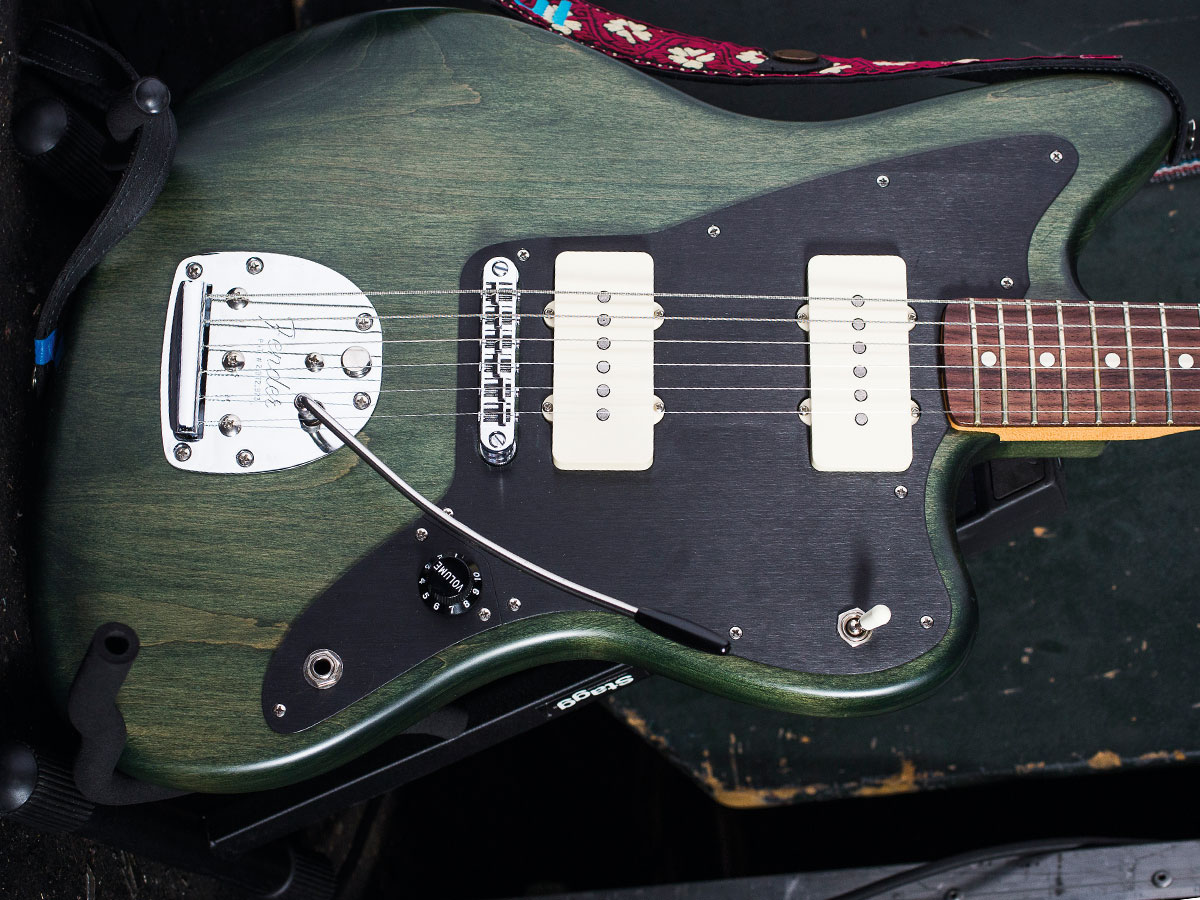
Primitive axes
What were the band’s early guitars like?
TM: “Just cheap Harmony guitars and Framuses and things that we’d find for, like, no money at a pawn shop. I had a Fender Stratocaster that my brother gave me when I was 19, but that got stolen fairly quickly as soon as I moved to New York. It was a nice guitar, but I think he actually bought it stolen to begin with, so that was its trajectory, I guess.
"[Glenn Branca] modified them cosmetically, like he’d shaved some of the headstocks so they were like spears!"
"Then, when we first started getting more active writing more songs after our first record, we needed other guitars to do things on. I remember expressing this to [Glenn] Branca, and he ended up coming over to our flat with about three guitars in each hand.
"They weren’t even in cases - ‘Here’s some guitars for you guys to play!’ They were crappy guitars... and he’d modified them not so much electronically but cosmetically, like he’d shaved some of the headstocks so they were like spears!
“He was, like, completely devaluing the no-value that those guitars had! I think we ended up trading them in to get some better guitars.”
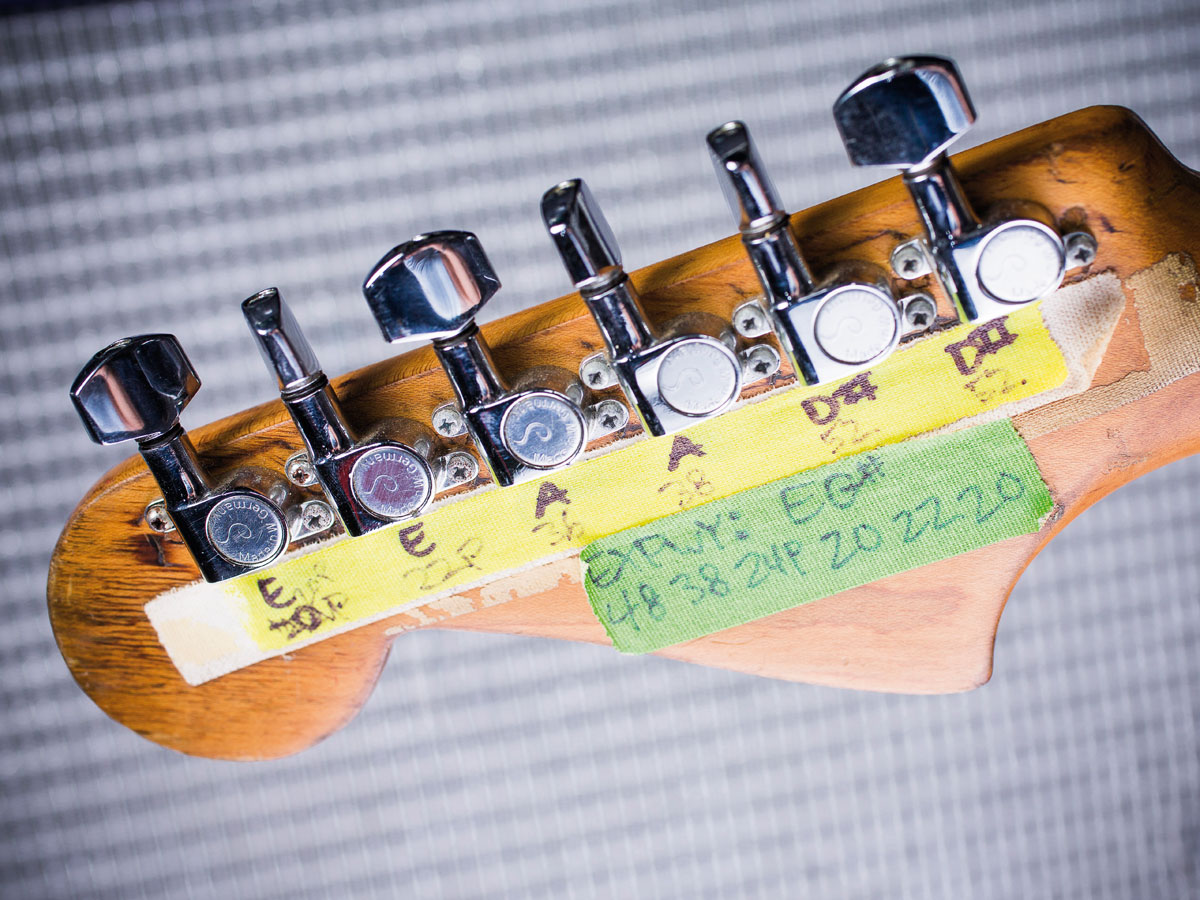
Getting in tune
When did you start to really play around with altered tunings?
TM: “The first Sonic Youth album was all standard tuning, but we kind of started f **king around a little bit with stuff on Confusion Is Sex [1983]. And a lot of that was just based on the guitars we were using, like one just had four tuning pegs on it and four low strings.
"We refined how things worked and worked with other tunings"
"She’s In A Bad Mood was written with that and with me just sliding up on it and creating atmospheres with my playing. It wasn’t until after that that this tuning of F#F#F#F#EB happened, and that was the first real tuning that was sort of notated. When I came up with that, I immediately started writing songs in it, like Brave Men Run [In My Family] and Death Valley ’69.
"Then we refined how things worked and worked with other tunings. Lee would either do something that was in unison or he would do something of his own invention that was complementary. It wasn’t discussed. It was just the way we were doing it.”
What are your favourite tunings?
TM: “The record we did right after Confusion Is Sex was a mini-LP called Kill Yr Idols [1983]. There’s a tuning on there that is GGD#D#DD. I always liked that tuning. It’s just three notes, but that’s what Kill Yr Idols and Brother James, and a few other things were in. It created this more heavy rock kind of sound that I really liked.
"The other tunings tended to be a little more squirl-y, some more than others, but this one was really open to the point where I could create songs with that kind of chug-a-lug to them but they still had that real minimal electric mantra sound. I’d like to go back to that tuning, actually, and do some more with it.”
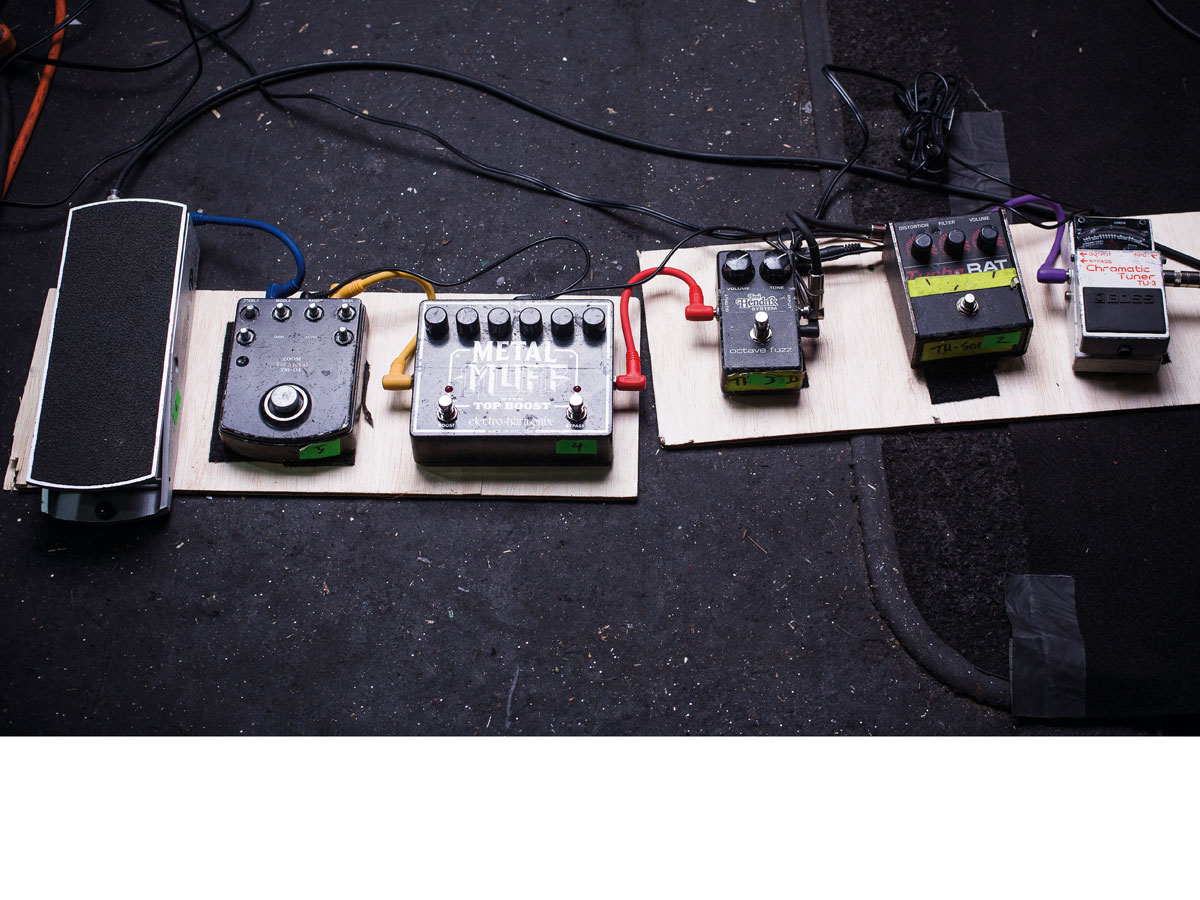
Get your self effected
How many effects did you tend to use while you were in Sonic Youth?
TM: “Lee started using pedals first, but I don’t know how early on. We didn’t use them for a while because pedals were another expenditure which we didn’t have any money for.
"I love feedback. It’s just the relationship between you, the guitar and the amplifier."
"I think maybe the first pedal that was used was probably a compressor pedal, just so we could get a punchier sound out of the amp or something. I held out for quite a while on using pedals, while Lee started getting more expansive with it, which I thought was fine.
“I would just use the amp for overdrive. It was like, ‘Well, okay - you can do all the pedal work and I’ll just be playing the way I play!’ Even to this day I don’t really use pedals, except for certain sections of songs that get into long improvisations, but I don’t really utilise them too much. The pedals I have are just variants of distortion. I used to use a phase-shifter, but I don’t use that anymore.”
How did sonic Youth start using feedback as a compositional tool?
TM: “In terms of using feedback compositionally, I think that just sort of happened. There wasn’t many people that I know of playing feedback guitar in our scene.
"I think Black Flag was really influential in that respect. I have a tape of Black Flag, where Lee and I are at the gig, and it must’ve been like ’83 and they had just stopped playing a song; it was almost two minutes before the next song came on because something was happening onstage. The amps were just rolling with feedback. It was kind of low but it filled up the room in such a way and you can hear Lee as I’m recording it, saying, ‘This sounds amazing! We have to do a whole record of this’.
"In ’82 or something, we were asked to play at this performance art space in New York and we decided to do a guitar feedback performance. We stood there, turned the amps up and fed back for 10 minutes. It really polarised people... but I think the first time we used feedback as a compositional element, where we had control over it, was on Bad Moon Rising. I love it. It’s just the relationship between you, the guitar and the amplifier.
"James and I still do it when we play. That’s something I enjoy doing more than anything - improvising with feedback as a primary sound!”
Thurston Moore’s album The Best Day is out now on Matador records

